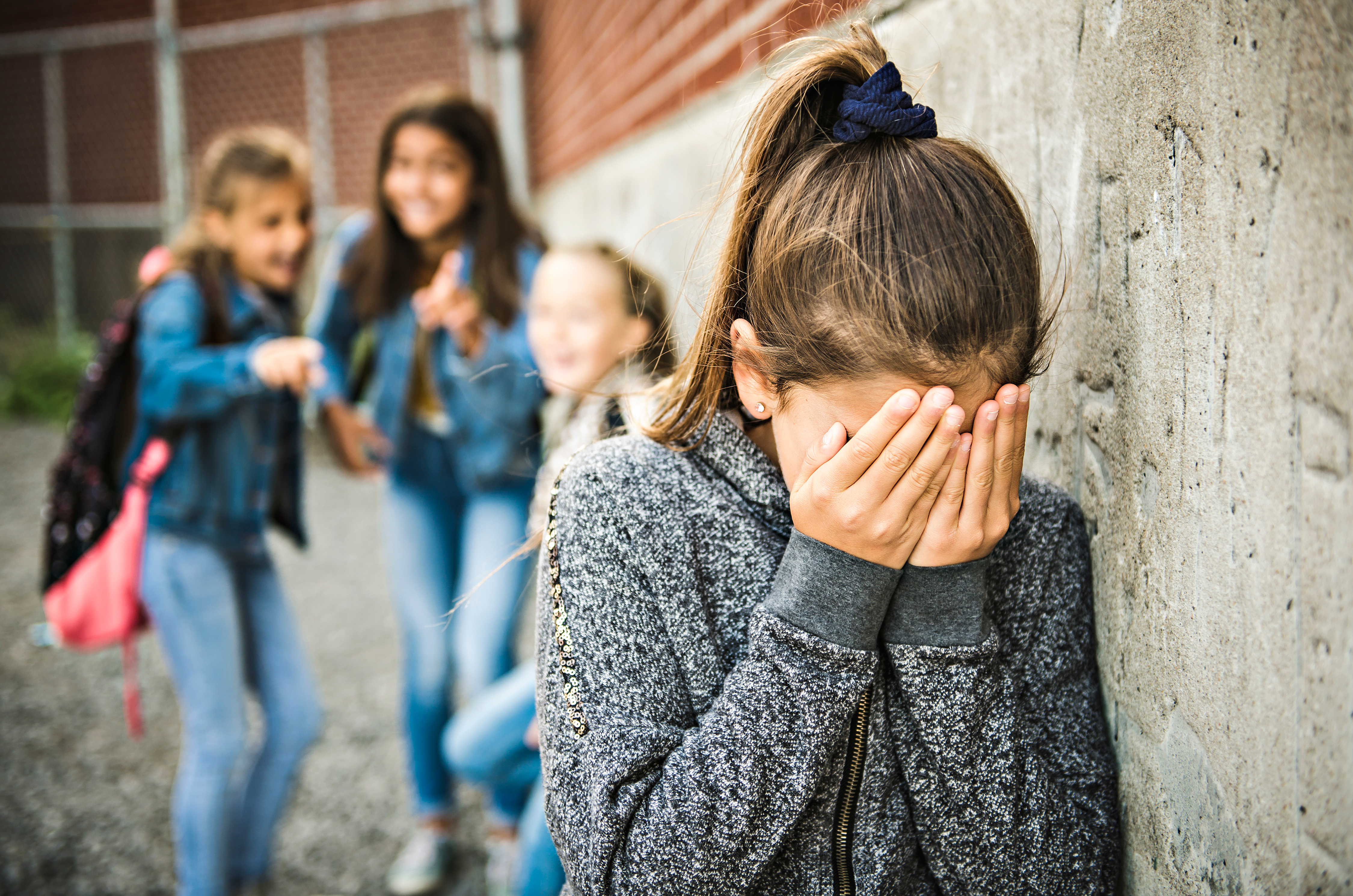What is Social and Emotional Learning?
Are you interested in understanding what social emotional learning is and how you may better support your students' social-emotional needs in the classroom? Take a moment to read our blog article to help you better understand the framework and five competencies of social-emotional learning.

I hear from teachers often that they are asked to use SEL in the classroom but they don’t know where to start. I get it. It can seem overwhelming. So let’s break it down a bit. Beginning in the 1980’s, states began developing academic learning standards for core subjects from kindergarten through high school. As a result, the U.S. system of educational reform began to shift from one of inputs to one focused on outputs, meaning that for roughly the last four decades, education policy has focused more on accountability and the measurement of student progress than in previous years. With the passing of the No Child Left Behind Act of 2001 (and its subsequent reauthorization in the form of the Every Student Succeeds Act in 2015), the pressure has been on for schools and districts to measure progress and raise student achievement levels. Subsequently, due to this current input-output system, there has been a razor-sharp focus on student achievement and teacher accountability. As a result, the entire process of education has been broken down into its mathematical components — which group performed well on which test and which school or district is considered “better” in terms of educating students. Unfortunately, what gets lost in the shuffle is what is at the very heart of education — the students themselves.
Enter the need to address the whole student, not just as a data point on some report or a number in a grade book, but to truly see each and every student as a viable, intelligent, caring, compassionate, and socially responsible human being. Originally developed by the Association for Supervision and Curriculum Development and the Centers for Disease Control, this whole student approach to learning is designed to prepare students for the challenges which lie ahead by addressing them in a comprehensive and holistic manner. As a result, educators need to be equipped with the necessary tools for improving their methods for reaching students at their very core. What began as an effort to transition students from a narrower, more academic focus to an approach whose vision is to educate the complete student, has since skyrocketed into the realm of what is now known as “social and emotional learning”. Until recently, most educators were laser-focused on test results. How are my students’ test scores compared to others? What can be done to improve their test scores? What data can be used to drive instruction? All too often, social and emotional wellness is left out of the conversation on student achievement. Without a safety net in terms of social and emotional growth, many teachers tend to find it difficult — if not impossible — to reach their students, especially their most vulnerable ones.
What is social and emotional learning?
Also known as SEL, social and emotional learning is a hot-button topic in education today, mostly because it focuses on the whole student. Essentially, SEL is a process for learning essential life skills such as decision making, problem solving, effective communication, empathy, perseverance, and coping, just to name a few. The Collaborative for Academic, Social, and Emotional Learning, or CASEL, is a worldwide organization devoted to using its resources to promote the integration of students’ academic, social, and emotional needs from preschool through twelfth grade. According to CASEL’s website, social and emotional learning is “the process through which children and adults acquire and effectively apply the knowledge, attitudes, and skills necessary to understand and manage emotions, set and achieve positive goals, feel and show empathy for others, establish and maintain positive relationships, and make responsible decisions.” SEL is based on the premise that the best learning takes place when students are able to engage in supportive relationships which then make learning challenging, engaging, and meaningful. More and more, schools have a vested interest in SEL, as many of their curriculum choices and school/district-wide practices and policies are embedded in the successful implementation of this concept. Since SEL showcases how students and adults relate to one another across many different levels of the school system, it has proven to be an invaluable component of a positive classroom and schoolwide community.
What is the basic framework of SEL?
According to CASEL, the teaching of social and emotional learning is guided by four distinct principles.
- It’s all about values. Values are at the core of everyone’s behavior; they drive us and provide a purpose for our behavior. A person’s core values have a major influence on his/her behaviors and attitudes and serve as broad guidelines in a myriad of situations. Thus, acting without values in a given situation ultimately leads to inconsistencies in both purpose and actions.
- SEL skills need to be explicitly taught. The skills gleaned from social and emotional learning need to be explicitly taught to ensure that students acquire the necessary competencies, knowledge, and habits of mind that ultimately help them face future challenges effectively. There are five key competencies of SEL: self-awareness, self-management, social awareness, relationship skills, and responsible decision making.
- Schools play a critical role. Teachers and other school leaders are incredibly important to the successful implementation of SEL skills because they serve as role models. As every educator knows, students spend an incredible amount of time in school. Therefore, it is essential that their role models act and model appropriate social and emotional behavior in addition to facilitating a quality academic experience. It is also important to note that teachers cannot do this alone. Rather, the overall school environment plays a significant role as well, as it supports and enables the teaching and learning of these critical lifelong skills.
- SEL skills lead to the development of good character. Students who are able to successfully master social and emotional skills are anchored with good values and sound judgment. This, in turn, leads to the development of good character and upstanding citizens in the larger view of the world.
Ultimately, students who are able to successfully acquire social and emotional skills are better able to manage themselves and their relationships in a positive and effective manner. SEL prepares students to live and work as adults in the 21st century, as students who have mastered these skills are more confident and self-directed in their own learning, which also translates into concerned citizens and active contributors to society.
What are the five key competencies of SEL?

The goal of SEL education is to teach students how to be kind, empathetic, caring individuals. The “big picture” of SEL education is that students can be taught these critical life skills within the confines of their own classrooms and schools. And the research points to just that. It has been shown that SEL education improves academic achievement by an average of 11 percentile points, while simultaneously increasing prosocial behaviors (e.g., kindness, sharing, empathy, etc.), while improving students’ attitudes toward school and reducing stress and depression among students (Durlak et al., 2010). There are five key competencies to a successful SEL program.
- Self-Awareness. Self-awareness involves the ability to understand one’s own emotions, personal thoughts, goals, and values, and how they influence behavior. This is also where growth mindset comes into play. Students who are self-aware have the ability to accurately assess their own strengths and weaknesses, while at the same time maintain confidence in their ability to eventually reach their goals in the absence of mastery.
- Self-Management. Students who are able to self-manage possess the necessary skills and attitudes to regulate their own emotions and resulting behaviors across a variety of situations and scenarios. These students are able to set goals and have the organizational abilities to reach these goals. This means that students are able to successfully manage stress, control their impulses, delay gratification, and persevere through challenging episodes in order to accomplish their personal and educational goals.
- Social Awareness. Socially aware students are able to understand, relate to, and feel sympathy and compassion for others who are different from them, including those with different backgrounds and cultures. Socially aware students have an appreciation for and respect for others with diverse backgrounds and are able to recognize the various socially acceptable and ethical norms for behavior such as not looking directly at a person’s eyes when speaking. (For example, in Japan, etiquette prescribes that fixing one’s eyes on the chest of the other when speaking leads to a better impression and instills in the other a desire to hear what one has to say.)
- Relationship Skills. Students who are well-versed in relationship skills have the ability to establish and maintain healthy and rewarding relationships, while at the same time acting within social norms and constructs. Some of these skills include effective communication, active listening, working cooperatively, responding to conflict in a constructive manner, resisting inappropriate outside pressures and influences, and asking for and offering help when needed.
- Responsible Decision-Making. Students who are able to make responsible decisions have learned how to make constructive choices across a variety of settings. In order to make responsible decisions, students must consider such things as ethical standards, safety concerns, social norms, and the overall health and well-being of themselves and others. Students must also be able to realistically evaluate the consequences of various actions, taking all of the above into account when deciding.
CASEL has illustrated these five competencies in the form of a wheel graphic available at their website.
Why is SEL training in such high demand?
Due to the increased recognition of the role that SEL plays in students’ overall learning, many policyholders have also taken notice. Because of this, teachers are often encouraged to integrate social and emotional skills into their content area teaching to various degrees. However, with that said, standards for social and emotional learning can vary considerably. For instance, although all fifty states currently have social-emotional development standards at the preschool level that are separate from those of other academic and health goals, the fact remains that having such distinct SEL standards at every grade level is still extremely rare. Currently, only a handful of states require comprehensive, free-standing SEL standards at the K-12 level, including states such as Illinois, Kansas, Pennsylvania, and West Virginia.
For a variety of reasons, today’s students face completely different challenges than their counterparts of the past. Consider the world in which we currently live. Are our students prepared for constantly being bombarded with tragic images and uncertainty? Furthermore, unlike their counterparts of the last century (and even the last decade), most classrooms find themselves increasingly multicultural and multilingual, consisting of students from very diverse and contrasting backgrounds — socially, emotionally, economically, and culturally. This is why the demands of the 21st century require a new approach to education, one in which students are fully prepared to engage in college, career, citizenship, and life. Of course, this cannot happen unless teachers and schools attend to each and every student’s holistic needs, instead of merely focusing on only those which can be addressed in the academic realm. This is why social and emotional learning is important and is here to stay.
Are you curious? Want to learn more?
To learn more about social and emotional learning, visit the Professional Development Institute (PDI) website or go directly to comprehensive list of courses for Social and Emotional Learning training. PDI has been offering quality online professional development courses to K-12 educators for over 27 years and provided training to over 345,000 teachers across the globe. We specialize in offering quality, affordable university-approved online courses that focus on the most relevant topics in education while providing practical strategies that can be implemented in the classroom immediately. All PDI courses are at the graduate-level, instructor-led, and are conducted entirely online. University credit is available through University of California Division of Extended Studies. PDI offers an extensive catalog of online courses for teachers on topics that are the most critical in today’s classrooms.
Article References
Durlak, J.A., R.P. Weissberg, & M. Pachan (2010). “A Meta-Analysis of After School Programs That Seek to Promote Personal and Social Skills in Children and Adolescents.” Retrieved 13 Nov. 2017 and 15 Dec. 2017 from http://www.flume.com.br/pdf/Durlak_A_meta-analysisof_after_school.pdf
Categories: SEL, social and emotional learning

View PDI's Catalog of Courses
Check out a list of all PDI graduate-level online courses or sort by grade level or subject area.

Register Now!
Quick access to register for PDI's online courses using our secure system.

Learn More about PDI
Find out how to reach PDI and get answers to any questions you may have.
